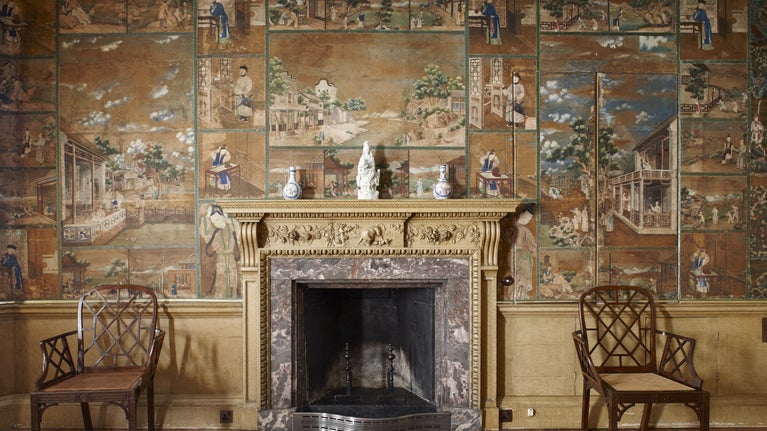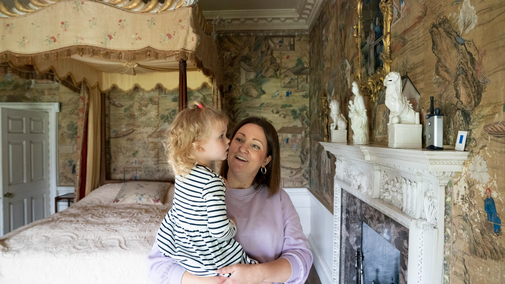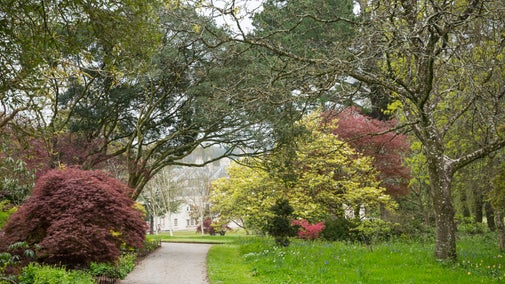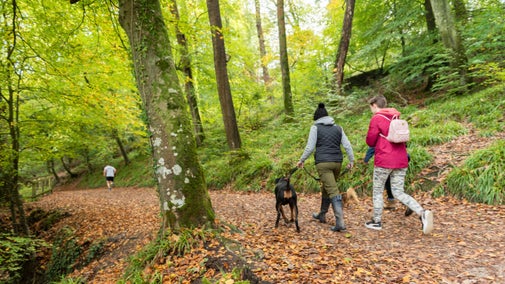
Discover more at Saltram
Find out when Saltram is open, how to get here, the things to see and do and more.

The Parker family arrived at Saltram in the 1740s, transforming it into a place for visiting and entertainment. Developed as a summer residence, the remodelling of the house, garden and parkland through the years are still at the heart of what makes Saltram special.
Theresa Robinson arrived at Saltram in 1769, the new wife of John Parker II. Influenced by her cosmopolitan upbringing, she wanted to bring her fashion sense to Saltram and viewed it as project – a house to refresh, redecorate and spend money on.
Together, John and Theresa completed the transformation of Saltram from manor house to Palladian mansion. They worked with Robert Adam, one of the most sought-after architects of the day.
Theresa wrote excitedly to her brothers about these developments, up to three letters a day.

Saltram remained in the Parker family for four more generations. Each left their mark on the house and its contents, following emerging fashions.
The architect John Foulston, who was tasked with updating large parts of Plymouth in the early 19th century, worked on Saltram’s library.
Victorian plant-collecting and the family’s connection to the Westonbirt Arboretum influenced the growing and changing garden. Yet, the changes were always sensitive to the important early history of the house, which explains why so many layers are still so easy to discover in the present day.
The Saloon is one of the most complete rooms designed by architect Robert Adam and finished in 1772. Adam’s company tended to produce designs for all elements of a room.
John and Theresa Parker knew what they wanted and didn’t accept all of Adam’s designs. For example, they rejected his idea for a fireplace design in favour of the one already installed. At least three alternative designs for the ceiling were drawn up before they were happy.
The Axminster carpet in the Saloon was made to Adam’s design, possibly the largest ever woven. Payments were made to the famous furniture maker Chippendale and to Joseph Perfetti for tables and seating. The wall hangings were made of blue silk from Genoa.

Saltram’s library is a wonderful example of an evolving family collection. In 1780, the library moved from its former location, now the dining room, to its current spot.
Anne Robinson wrote in 1796 that the shelves were enlarged ‘to make more room for books'. Remodelled by architect John Foulston in 1818, the fascinating library at Saltram is home to over 3,000 volumes.
Look a little more closely and you won’t find only the more scholarly editions. Saltram’s library contains a wealth of books from antiquarian texts to popular novels.
In 1788, the writer Fanny Burney described Saltram as 'one of the most magnificent houses in the country'. The 18th-century decoration referred to by Burney is still preserved to this day.
Saltram is a much-loved feature of Plymouth and many thousands visit the house, garden and parkland. It came to the National Trust in 1957, accepted in lieu of tax as part of the National Land Fund after the Second World War.
Find out more about the history of the house by watching this animated potted history of Saltram.

Find out when Saltram is open, how to get here, the things to see and do and more.
Originally designed for entertaining guests amid the backdrop of the amphitheatre and Orange Grove, the garden at Saltram has plenty of history just waiting to be discovered.

See what there is to discover among the collection at Saltram, including fine examples of Wedgwood ceramics, intricate Chinese wallpapers and portraits by Joshua Reynolds.

Feast your eyes on Robert Adam’s neo-classical saloon, lose yourself in stories in the Chinese wallpaper and wonder at the sheer volume of books in the library.

Discover what there is to see and do in this garden full of seasonal scents and bursting with colour, with views across the River Plym and beyond.

Woodland, estuary and open green spaces provide the backdrop to a city escape as you explore the beautiful countryside nestled near Plymouth’s urban environment.

Learn about people from the past, discover remarkable works of art and brush up on your knowledge of architecture and gardens.

Explore the objects and works of art we care for at Saltram on the National Trust Collections website.
